The week at a glance
- Flamborough Flycatcher turns out to be Pied
- Forster's Tern back in Wexford
- Plenty of Red-rumped Swallows and White Storks still scattered across the country
- Red-spotted Bluethroats and Wrynecks highlight a fall across the Northern Isles
- Good passage of Long-tailed and Pomarine Skuas off the Outer Hebrides
Last week, many of Britain's twitchers were poised on the edge of their chairs, eagerly awaiting a certain set of DNA results from an Aberdeen lab. This week, with precious few major finds (zero, to be precise!), there was little change on that front. However, with a Brown-headed Cowbird pitching up in northeast Germany, and Iceland scoring both Slaty-backed Gull and Tree Swallow following a fast-moving Atlantic depression, perhaps we should have been exploring west-coast headlands rather than perusing online forums for the latest Ficedula forensics. Needless to say, all Britain and Ireland could muster was a small arrival of Nearctic wildfowl and waders.
Very few could say they were expecting the flycatcher results to be as they were. Some were still clinging to the remote hope that Flamborough's Ficedula might yet still be an Atlas Flycatcher, although more and more were beginning to fall in line with the altogether safer (though still exciting) bet that it was an Iberian Pied. However, pretty much everyone was left feeling a mixture of bemusement and deflation when it turned out to be a rather bog-standard Pied Flycatcher, "[with DNA] pretty much identical to birds from the Czech Republic and Scandinavia". Both mitochondrial and nuclear DNA showed the bird to be an unequivocal Pied. Despite the disappointment for all those who travelled to the Yorkshire coast for 'insurance purposes', no-one can deny the saga has been a huge lesson for all involved, and has no doubt radicalised our perception of black-and-white flycatchers across Europe. The bird was last seen on 10th.
Otherwise, there really wasn't a lot to shout about. After last week's Little Swift report in Cambridgeshire, a fat slice of unconfirmed Apus action was dished out in southern England. A Pallid Swift was belatedly reported from the London Wetland Centre on 12th, while reports of the ever-elusive Pacific Swift came from Strumpshaw Fen (Norfolk) on 11th, Walberswick (Suffolk) on 12th and Collingham Pits (Notts) belatedly from 8th; the last was later confirmed as an aberrant Common Swift, but the other two were not accounted for. Just to rub salt into the wound, there was a further belated report of a Little Swift from Buckenham Marshes (Norfolk) on 7th...!
New wildfowl included a splendid Black Brant with just four Pale-bellied Brents in Stinky Bay, Benbecula (Outer Hebrides) on 11th, and a drake American Wigeon on North Ronaldsay (Orkney) on 14th–15th. For the first time since the autumn, a blank week for Green-winged Teal passed, although the drake Blue-winged Teal continued its stay at Bridgend Farm Pool (Clyde) throughout. Also still about were the drake Lesser Scaup at St. John's Loch (Highland) and the drake Ring-necked Duck at West Ashby (Lincs), with another Ring-necked at Blanket Nook (Donegal) on 12th–13th.
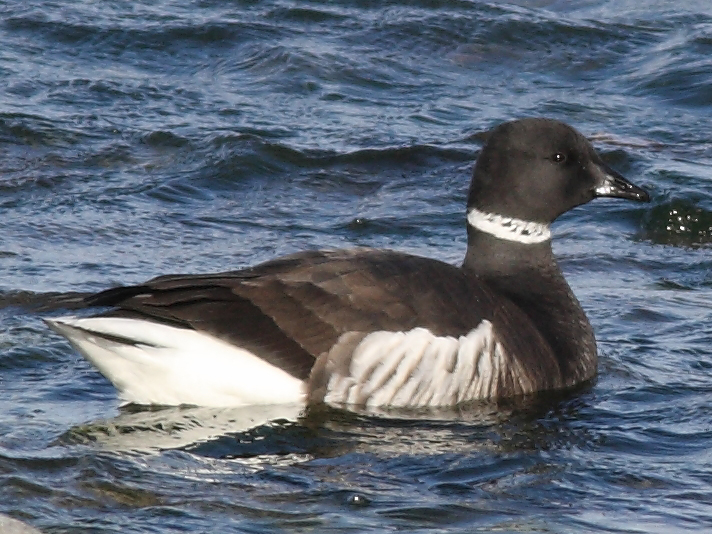
Black Brant, Stinky Bay, Benbecula, Outer Hebrides (Photo: Peter Stronach)
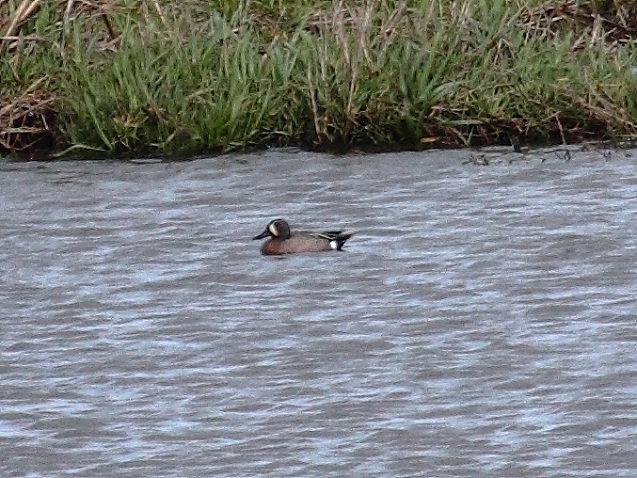
Blue-winged Teal, Bridgend Farm Pool, Clyde (Photo: Liam Reid)
A somewhat unsurprising fixture was the continuing drake King Eider on the Ythan Estuary (Aberdeenshire) all week, and the drake Surf Scoter was also still off Port Seton (Lothian). Two further drakes were found in the Sound of Harris (Outer Hebrides) on 15th, although White-billed Divers were restricted to the continuing bird off Herston, South Ronaldsay (Orkney) and another at sea west of Melvaig (Highland) on 10th.
In Somerset, Blagdon Lake's Squacco Heron remained in residence, growing increasingly showy as the week progressed. Three brief Purple Herons were seen in Somerset, Gloucestershire and Gwent, while there were also three Night Herons: a mobile adult frequented gardens around Flamborough (E Yorks) on 10th–14th (and had been present for three days previously), while others (the latter a 'possible') were in West Midlands and West Sussex. There were no Cattle Egrets reported, and just three Great White Egrets were in Essex, Somerset and over Ramsey Island (Pembrokeshire) on 15th. Seemingly a resident British species these days, a dozen Glossy Ibises included four still at Marloes Mere (Pembrokeshire) throughout.

Night Heron, Flamborough (village), East Yorkshire (Photo: Tony Dixon)
With the disappearance of the wandering mega-flock and corresponding appearance of various ones and twos, the waters surrounding White Stork records were further muddied this week. Thirty-eight reports were received on Bird News Extra, with what were presumably the 'original' two still touring various sites between Kent and West Sussex. What were perhaps two different individuals were seen over Birchanger Green (Essex) late in the morning of 12th, and these presumably account for sightings of singles over other sites in Essex, Buckinghamshire and Hertfordshire. A bird seen from a train at West Moor (Somerset) on 12th was eventually pinned down from 14th, while other singletons were seen in Devon and Cork. In light of this new flush of records, perhaps the five have now split into smaller contingents?

White Stork, Tyttenhanger GPs, Hertfordshire (Photo: David Sampson)
It is a shame to see some being so blasé about this spring's run of Pallid Harriers. Although not the genuine rarity they once were, at least two of these stunning birds continued to entertain following their arrival last week. A probable juvenile was seen flying past Stiffkey (Norfolk) on 10th, although more co-operative was last week's Spurn bird eventually pinned down at nearby Patrington Haven (E Yorks), where it lingered over fields from 14th. The Lincolnshire bird was again reported from the Rimac/Donna Nook area on 11th–12th.

Pallid Harrier, Patrington Haven, East Yorkshire (Photo: Justin Carr)
Among a small number of flyover Black Kites were records from Lady's Island Lake (Wexford) on 15th and another in off the sea at Dungeness (Kent) the following day. There was also an unseasonable report of a grey-morph Gyr over Buttermilk Hill, St. Ives (Cornwall) on 14th, while a couple of male Red-footed Falcons in Kent and Norfolk were more typical mid-May arrivals. Up in the Outer Hebrides, the male Snowy Owl returned yet again to the machair at Greinetobht and Solas, North Uist.
Black-winged Stilt records finally began to peter out, with lingering birds still at Elmley Marshes (Kent, two) to 11th and again at Frampton Marsh (Lincs) from that date. In Wexford, the American Golden Plover remained at Tacumshin throughout the week, with the site also claiming a Spotted Sandpiper on 11th–13th. The female Kentish Plover at Marazion (Cornwall) was joined by a male to 14th, while another female flew over Cley (Norfolk) on 10th. A male at Holy Island (Northumberland) from 15th was an excellent record for so far north, and was even joined by a White-rumped Sandpiper there on 16th, with Cley also claiming a brief White-rump on 11th.

Kentish Plovers, Marazion, Cornwall (Photo: Alex Mckechnie)
The rather sudden arrival of several Pectoral Sandpipers to northern and western areas from 14th was arguably more consistent with arrival in the wake of a fast-moving transatlantic depression than a northward movement of birds through Europe. Birds were on Tiree (Argyll) and North Ronaldsay on 14th, with another at the Butt of Lewis (Outer Hebrides) on 15th joined by a second the following day. Further birds were at Kilcoole (Wicklow) from 15th, and Buckenham Marshes (Norfolk) and Newport Wetlands (Gwent) both on 16th.

Pectoral Sandpiper, Tiree, Argyll (Photo: John Bowler)
In Aberdeenshire, the Greater Yellowlegs was again on the Ythan Estuary on 12th before relocating back to Loch of Strathbeg from 14th, and Cumbria clung on to its Long-billed Dowitcher at Hodbarrow to 12th. Three northbound Red-necked Phalaropes included a female at Upton Warren (Worcs) on 15th — the fifth year in six the species has been record on site — and others in South Yorkshire and Gloucestershire, while there were around ten Temminck's Stints.

Long-billed Dowitcher, Hodbarrow RSPB, Cumbria (Photo: anon)
Tacumshin was also able to welcome back the adult Forster's Tern for at least its fifth year from 12th. It has a remarkable propensity for turning up in the second week of May, so this year's appearance was bang on cue. Also in Ireland were a couple of immature Ring-billed Gulls — this week in Cork and Kerry.
Although numbers are hugely weather-dependent and thus vary annually, the passage of Long-tailed and Pomarine Skuas off the Outer Hebrides is an annual mid-May fixture. Suitable conditions saw a spectacular 550 Long-tailed and 600 Pomarine Skuas past the traditional location at Aird an Runair, North Uist on 13th, with Ardivachar Point, South Uist also recording at least 100 Long-taileds. Although numbers of Long-tailed fell away the following day, another 635 Pomarines were noted past Aird an Runair. Smaller numbers were also seen in the Solway and off Orkney and Shetland, while two Long-tailed over Drayton Bassett Pits (Staffs) on 15th must have been quite a shock.
Northeasterly winds brought a good fall to the Northern Isles early in the week, with smaller numbers of birds also noted on the east coast of Scotland and in northeast England. Up to five Wrynecks were on Fair Isle, with three on North Ronaldsay and a further ten or so elsewhere. However, most were entertained by a pleasant spring showing of Red-spotted Bluethroats: up to three were on Fair Isle with a further male at Sandwick (Shetland), while England weighed in with birds on the Farne Islands, at High Newton-by-the-Sea (Northumberland) and at Hartlepool Headland (Cleveland), the last being particularly showy.

Red-spotted Bluethroat, Hartlepool Headland, Cleveland (Photo: Ron Hindhaugh)
It proved another excellent week for Red-rumped Swallows. Even accounting for some overlap in records, it appears that at least 30 birds were reported from Scilly north to Aberdeenshire, where a single bird was seen flying along the River Dee at Inchgarth Nature Reserve on 13th. Twos were noted in Suffolk, Norfolk, Lincolnshire and Northumberland, while up to four mobile birds could be found on St. Mary's (Scilly) to 14th at least. A single Irish record came from Tacumshin (where else?!) on 12th. Has there ever been a better time to find one on your patch?

Red-rumped Swallow, Low Newton-by-the-Sea, Northumberland (Photo: Gary Woodburn)

Red-rumped Swallow, Grafham Water, Cambridgeshire (Photo: Mark Hawkes)
A couple of singing Savi's Warblers were located during the week: one was reported singing in the early morning only at Walberswick (Suffolk) on 12th, although another reeling male at Strumpshaw Fen (Norfolk) — present for at least eight days — was much more reliable during the early mornings and late evenings, and even showed well (if a little distantly) once news was released on 16th. There was no sight or sound of the Rutland Water bird.
The Subalpine Warbler at Portland (Dorset) was reported again on 10th, and a female was on Bardsey Island (Gwynedd) on 14th — this is the ninth record of the species on the island since 2007! Slightly unseasonable was a singing male Siberian Chiffchaff at Crowdy Reservoir (Cornwall) from 15th. A singing Melodious Warbler in Leyton (London) on 16th was a massive bird for local listers, kindly lingering and showing well throughout the day. Less celebrated, however, were further birds on Jersey on 11th and at Northward Hill (Kent) on 16th.

Subalpine Warbler, Bardsey Island, Gwynedd (Photo: Ben Porter)
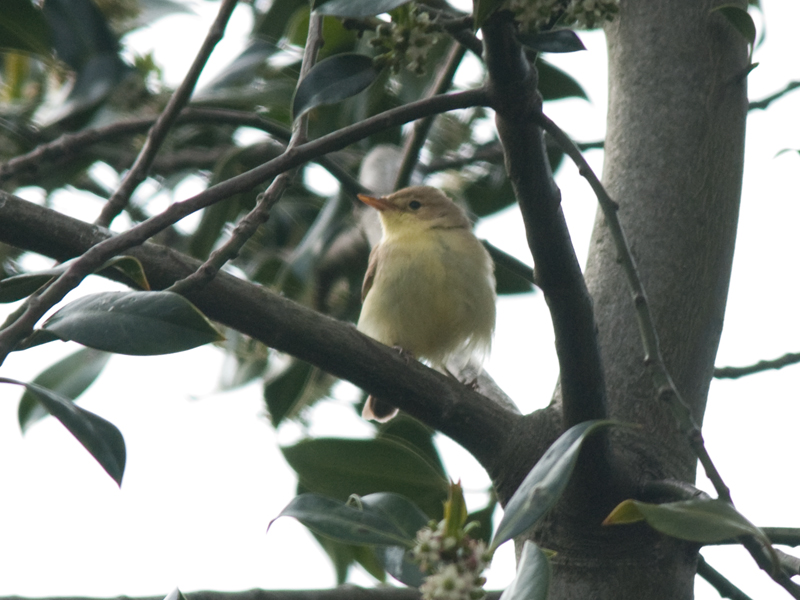
Melodious Warbler, Leyton, Greater London (Photo: David Campbell)
At long last, there was a decent arrival of Woodchat Shrikes to England, with at least seven reported. A male at Keyhaven Marshes (Hants) on 12th–13th was a typical south-coast arrival, with two in Devon including a lingering bird at Noss Mayo from 12th. Two were in the Land's End (Cornwall) area on 13th, while the lingering bird on St. Mary's (Scilly), last seen on 11th, was replaced by another from 16th.
Other typical spring sub-rarities were represented by around eight Hoopoes, five Grey-headed Wagtails, three Serins including a lingering female at Landguard (Suffolk), three Ortolans, a couple of Alpine Swifts, and four Bee-eater reports including a belatedly reported flock of ten over Chingford (London) on 7th. A Richard's Pipit was reported from Hornsea Mere (E Yorks) on 15th, while the Rose-coloured Starling was again at Selsey Bill (W Sussex) to 12th.
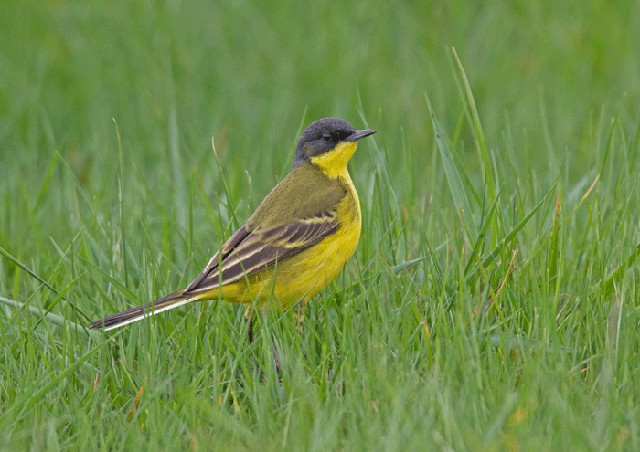
Grey-headed Wagtail, Cley Marshes NWT, Norfolk (Photo: Mick Green)
With the second half of May now upon us, many birders' minds will start to wander (geographically) in search of species that could potentially occur over the next month. Given that spring 2012 has so far been something of a non-event for extreme vagrants, perhaps we can all look forward to a multitude of arrivals in the weeks to come...and hopefully some warmer weather!
Photo of the Week
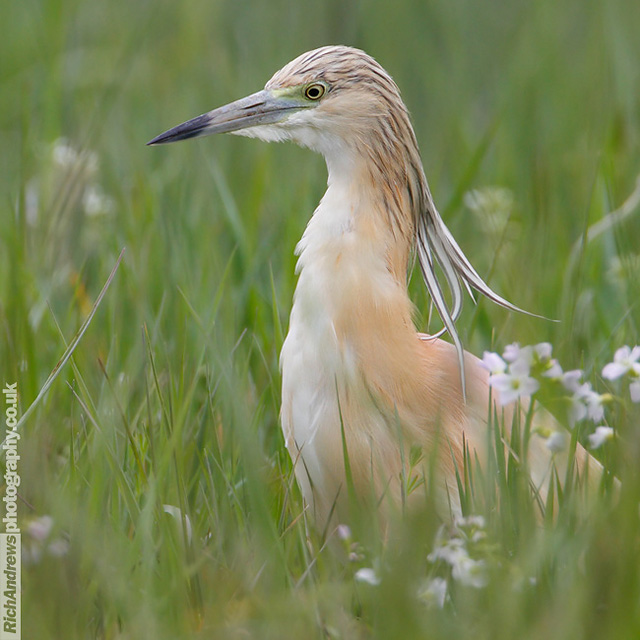
Squacco Heron, Blagdon Lake, Somerset & Bristol (Photo: Rich Andrews)
For most British birders, Squacco Herons are regarded as exotic rarities. As a result, the appearance of one of these birds on his doorstep must have been pretty exciting for Somerset-based local patcher and bird photographer Rich Andrews. However, the bird had proved difficult to photograph as it skulked around the margins of Blagdon Lake, despite being present for several days. On this occasion, though, as Rich described on his blog, "it spent the afternoon flouncing about in full view of everyone in one of the lakeside meadows amongst a photogenic background of cuckoo-flowers". His resulting photos show he was able to make the most of the opportunity and, in our favourite shot, the beautifully plumed bird is featured in close-up amidst the vegetation, soft light and shallow depth of field giving a dreamy feel to an elegant natural portrait.
Other notable photos

Common Whitethroat, undisclosed site, Lancashire (Photo: Austin Thomas)

Gannet, Bempton Cliffs RSPB, East Yorkshire (Photo: Antony Ward)
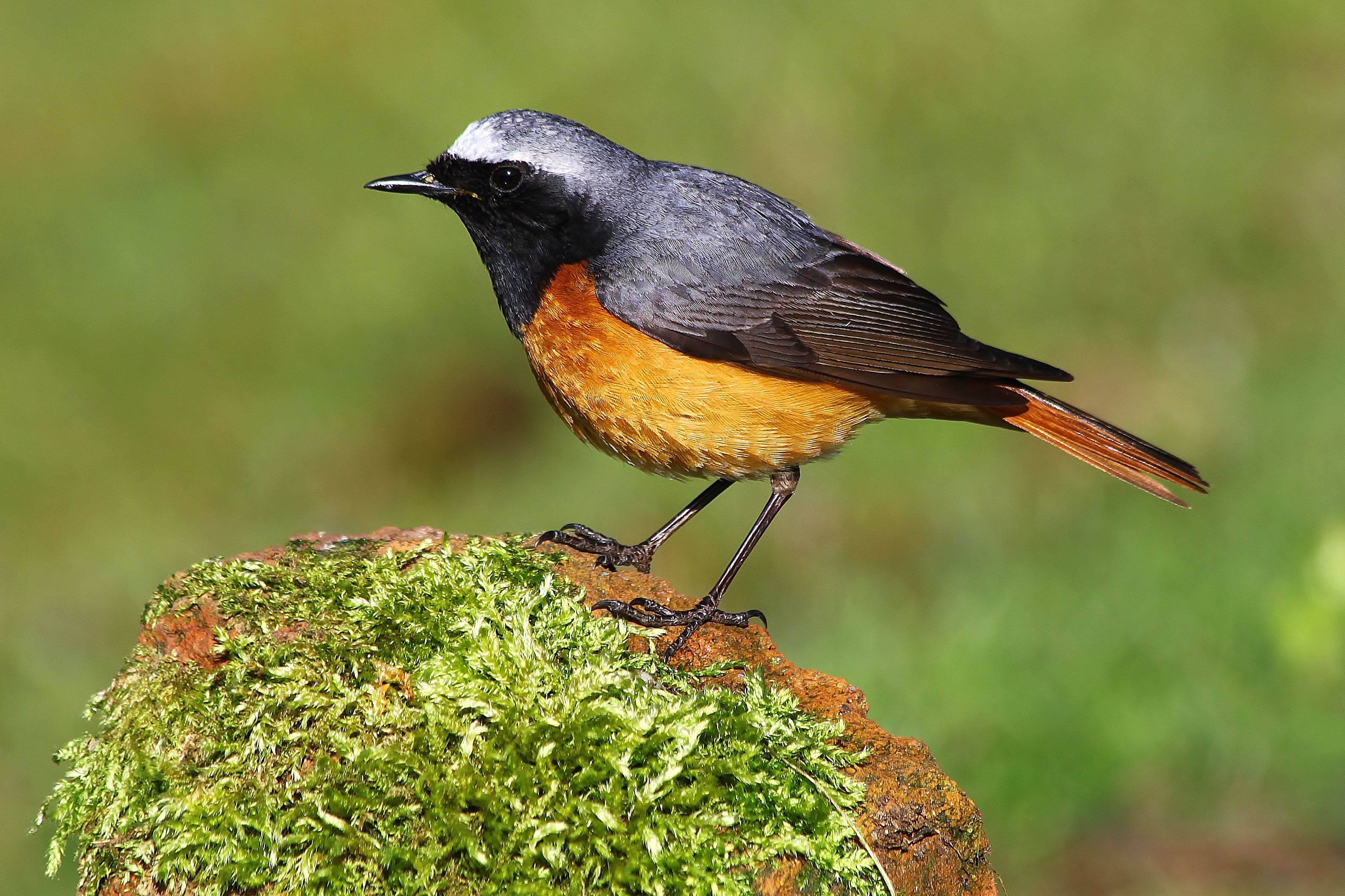
Common Redstart, undisclosed site, Worcestershire (Photo: Jill)

Little Gull, Seaforth LWT (Permit only), Lancashire (Photo: Steve Round)

Dotterel, Kirriemuir, Angus & Dundee (Photo: Gordon Linton)

Cuckoo, Stodmarsh NNR, Kent (Photo: Steve Ashton)
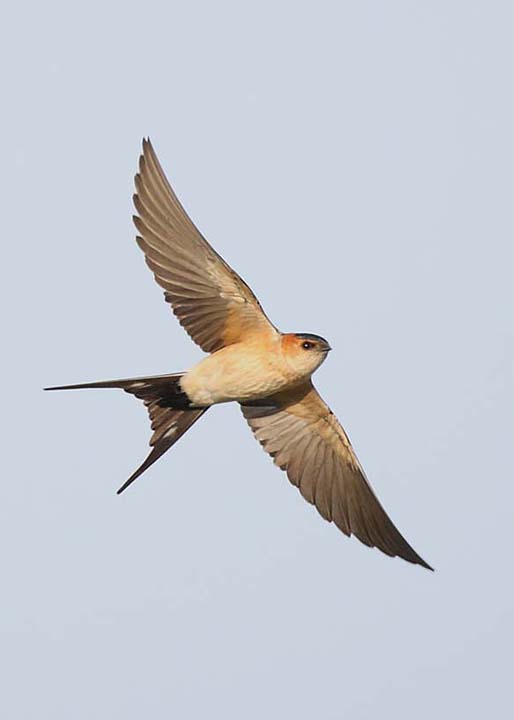
Red-rumped Swallow, Greatstone-on-Sea, Kent (Photo: Mick Southcott)

Common Swift, Cardiff Bay, Glamorgan (Photo: Raymond King)

Water Rail, Hungary (Photo: Eduardo Balogh)

Rüppell's Warbler, Greece (Photo: Jamie MacArthur)

Yellowhammer, Nigg Bay, Highland (Photo: Dawn Micklewright)

Common Snipe, undisclosed site, Borders (Photo: Brian Stevenson)

Great Grey Owl, Sweden (Photo: Ron Marshall)

Corn Bunting, undisclosed site, Lancashire (Photo: Tom Charles)
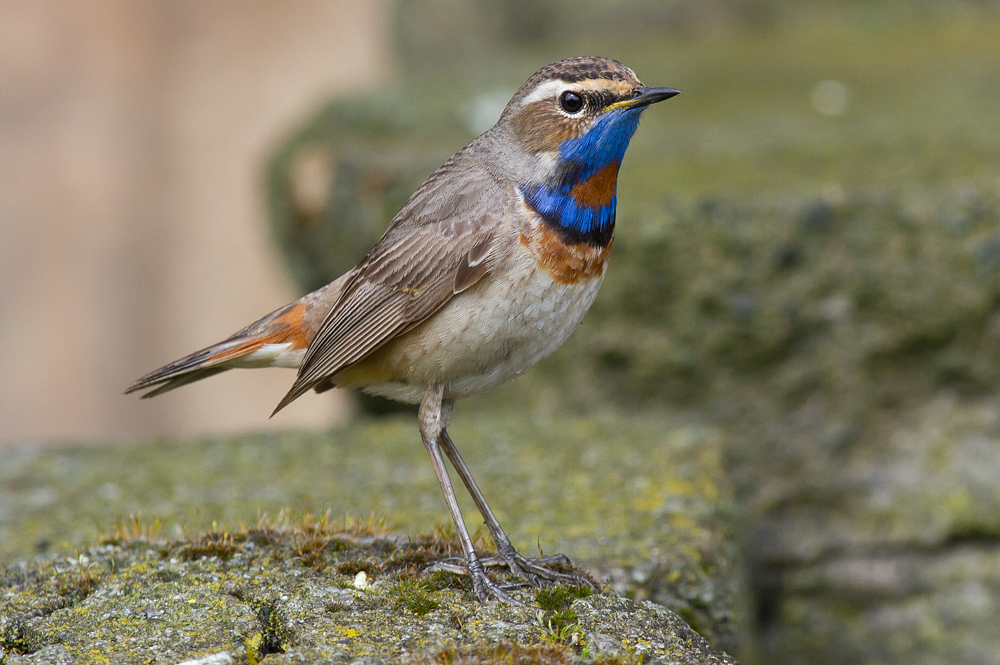
Red-spotted Bluethroat, Hartlepool Headland, Cleveland (Photo: Martyn Sidwell)


